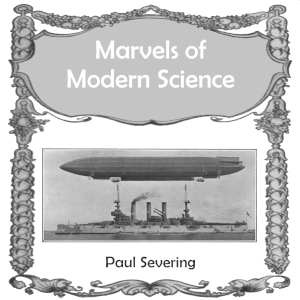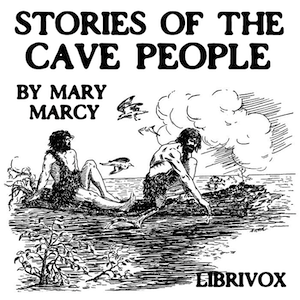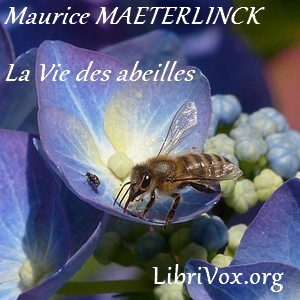Water is fascinating! Which child is not delighted by the sea shore, by rivers, even by puddles in the street? This little book explains to children that a river can cut through rock to weave its way to the sea, how sand is made, and how fish can breathe underwater. Grown-ups may learn some new things, too! - Summary by Carolin
35 episodes
The Natural History of Pliny the Elder is one of the largest single works to have survived from the Roman Empire. The full work consists of 37 books, covering more than 20.000 topics ranging from astronomy and mathematics to botany and precious stones. The book became a model for later encyclopaedias and gives a fascinating overview of the state of scientific knowledge almost 2000 years ago. This version of the Natural History (or, the "Pliny") has been adapted for a younger audience. This second volume contains Book III (Man, His Birth and His Organization) and Book IV (The Nature of Terrestrial Animals) out of a total of 9 books. - Summary by Foon
26 episodes
Seed Babies piques the child's interest about how seeds grow. It provides interesting information about seeds in a conversational style between two brothers and the various seeds they encounter. These seeds offer grammatical advice, chastises poor reasoning, provide enlightening information, and will often encourage the boys to go and discover answers to their questions themselves. In turn, the author lets the reader know that she too hopes that they will plant some seeds and make discoveries of their own. The last few chapters venture into the world of insects, frogs and various other eggs, encouraging children to consider the beginnings of various forms of life. In the end, this short book provides more questions than answers and helps children learn to be inquisitive about nature and to investigate answers to their questions. - Summary by SweetHome
14 episodes
The Natural History of Pliny the Elder is one of the largest single works to have survived from the Roman Empire. The full work consists of 37 books, covering more than 20.000 topics ranging from astronomy and mathematics to botany and precious stones. The book became a model for later encyclopaedias and gives a fascinating overview of the state of scientific knowledge almost 2000 years ago. This version of the Natural History (or, the "Pliny") has been adapted for a younger audience. This third volume contains Book V (Domestic Animals) and Book VI (The Natural History of Fishes) out of a total of 9 books. - Summary by Foon
28 episodes
"The Honey-bees are buzzy-fuzzy little pepper pots" Thus this wonderful nature writer begins to tell us about bees, their habits, their way of living and their many contributions to the world and to ourselves. The author writes for all ages and everyone can listen to and enjoy this book. - Summary by Phil Chenevert
21 episodes
This book discusses a great variety of plants and their seeds in a simple, yet interesting way that children will enjoy. As the books says, "Plants are great travelers; they often wander far and wide. Sometimes they even cross the ocean and take up their abode in a new land.” The importance of why seeds “travel” and the various means by which they move are investigated. ( SweetHome)
38 episodes
This is a collection of articles written by W. Mattieu Williams on different subjects, that in his opinion "are likely to be interesting to all readers who are sufficiently intelligent to prefer sober fact to sensational fiction, but who, at the same time, do not profess to be scientific specialists." This book offers and intriguing glimpse into the scientific ideas of late 19th century. Though nowadays these essays should not be seen as wholly scientifically accurate, they are still entertaining and in many basic aspects remain truthful. - Summary by Kikisaulite
58 episodes
This 1955 book by an acknowledged authority is an absorbing account of meteorology before the advent of weather satellites. “This is the lively account of the hair-raising experiences of the men who have probed by sea and air into the inner mysteries of the world’s most terrible storms…. Here is the first intimate revelation of what the human eye and the most modern radars see in the violent regions of the tropical vortex. The descriptions of the activities of these valiant scouts of the storms are taken from personal interviews with military flyers and weathermen who have risked their lives in the furious blasts in all parts of the hurricane. The author has made a special study of hurricanes for over forty years. He has served with the Weather Bureau as chief of the marine division, chief of all forecasting and reporting and assistant chief of the Bureau, in charge of its technical operations.” - Summary by Advertisement in the book and David Wales
18 episodes
"In this little book I have sought, in a series of stories or sketches, to present only the first steps in human progress. Man has risen from a stage of lowest savagery, little higher than the apes, buffeted by the hand of Nature, dependent upon the wild game he might kill or the food he found ready to hand, a fearing and a furtive creature of the forests and of the plains, preyed upon by a thousand stronger foes, to a being able to provide warmth and clothing and shelter against the rains and the cold and food against the seasons. He has become a master instead of a plaything of the elements. In a large measure he has become arbiter of his own food supply and, hence, his own destiny. He has subjugated, in a marvelous degree, the forces of Nature and harnessed them to his needs." - Summary by the author
13 episodes
This is a useful, but not comprehensive description of both edible and poisonous fungi found in Great Britain. Although the book is well illustrated, the descriptions are well done and useful. - Summary by Larry Wilson
13 episodes
Vie de ces insectes stupéfiants, et aussi philosophie, voire mysticisme..., l'Esprit de la Ruche ... - Summary by Christiane Jehanne
9 episodes

The purpose of this little book is to give a general idea of a few of the great achievements of our time. For instance, the flying machine is engaging the attention of the old, the young and the middle-aged, and soon the whole world will be on the wing. Radium, "the revealer," is opening the door to possibilities almost beyond human conception. Wireless Telegraphy is crossing thousands of miles of space with invisible feet and making the nations of the earth as one. 'Tis the same with the other subjects,—one and all are of vital, human interest, and are extremely attractive on account of their importance in the civilization of today. Mighty, sublime, wonderful, as have been the achievements of past science, as yet we are but on the verge of the continents of discovery. Just as our conceptions of many things have been revolutionized in the past, those which we hold to-day of the cosmic processes may have to be remodeled in the future. Science is ever on the march and what is new to-day will be old to-morrow. We cannot go back, we must go forward, and although we can never reach finality in aught, we can improve on the past to enrich the future. (From the Introduction)
16 episodes
The Outline of Science was written specifically with the man-on-the-street in mind as the target audience. Covering scientific subjects ranging from astronomy to biology to elementary physics in clear, concise and easily understood prose, this popular science work is largely as relevant today as when first published in 1922.
In this fourth volume (of four), we learn about bacteria, luminous organisms and lower vertebrates as well as domesticated animals. Other chapters are devoted to ethnology, health, relativity theory and philosophy of science. (Summary adapted from the first three volumes by Availle.)
23 episodes












